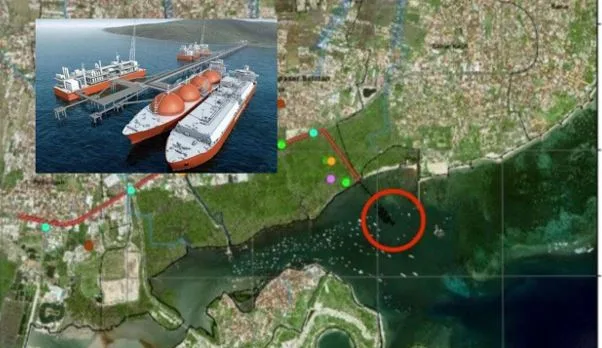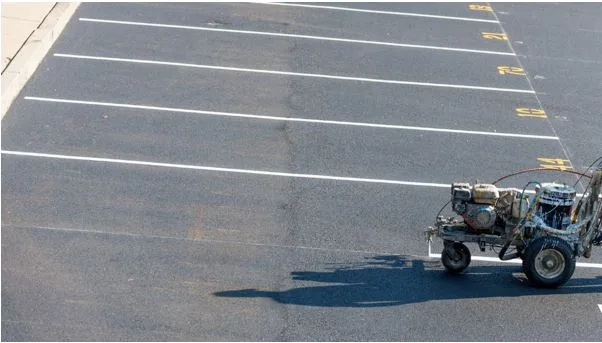Marine Scientist Debunks Environmental Concerns over Bali LNG Terminal Project
By Ferry Fadly – a senior journalist from Bali, dedicated to environmental, social, and cultural issues across the island and beyond
Denpasar, Bali – July 9, 2025
As public scrutiny intensifies over Bali’s Floating LNG Regasification and Storage Terminal (Tersus LNG), marine experts are stepping in to clarify what they say are persistent misconceptions—particularly claims that the project threatens endangered sea turtles and coral reefs in the area.
Dr. Ir. I Ketut Sudiarta, M.Si., a senior marine scientist and member of the Bali Governor’s expert team, publicly refuted accusations that the terminal’s location compromises marine biodiversity. “The most critical point the public must understand is that the LNG terminal is strictly located within a designated port zone,” said Dr. Sudiarta, a coastal and fisheries expert with decades of experience.
According to Dr. Sudiarta, the terminal site is situated in reclaimed tidal land once dredged during the Serangan Island reclamation project in the 1990s. “I have satellite imagery from before and after the Serangan reclamation. The area in question is now 7 to 8 meters deep and is outside any marine or turtle conservation zones,” he explained.
He emphasized that conservation zones, including designated sea turtle habitats, remain intact and are located far from the LNG site. “To claim otherwise is both scientifically inaccurate and misleading,” he added.
Dr. Sudiarta further noted that the project has undergone rigorous environmental assessments, including Environmental Impact Analysis (AMDAL) and additional regulatory evaluations. These studies, he said, concluded that potential impacts on marine life such as coral reefs and turtles are minimal to none.
The terminal is being developed by PT DEB in cooperation with provincial and local governments. Officials hope the project will not only boost Bali’s energy security but also revitalize a long-neglected area. The development plan includes improving mangrove conditions currently threatened by erosion, and upgrading derelict marine infrastructure around Serangan, Sanur, Sesetan, and Sidakarya—collectively referred to as the Sekartanur region.
“This area was once considered a slum. The Governor’s vision is to reorganize and elevate the region, with full support from local customary villages (desa adat),” Sudiarta stated. “It’s not just about energy infrastructure—it’s about restoring degraded land and water routes, building proper docks, and ensuring sustainable tourism and marine logistics.”
On allegations regarding the presence of nesting turtles in the project area, Sudiarta was unequivocal: “From both scientific and factual standpoints, this is incorrect. Green turtles no longer nest in Serangan. That habitat was lost due to the BTID reclamation in the 1990s. Any sea turtle activity today is part of educational and conservation efforts at the Turtle Conservation and Education Center (TCEC), not wild nesting.”
He also dismissed claims from student groups such as the National Student League for Democracy (LMND), who alleged that the project could lead to coral degradation and coastal erosion. “There are no nesting sites or coral sanctuaries at the LNG site. The location is already a bustling marine traffic zone, designated under the Small Islands Zoning Plan (RZWP). This project will not disrupt ecosystems that no longer exist in that area,” he reiterated.
Highlighting Bali’s recent island-wide blackout as a stark reminder of energy insecurity, Dr. Sudiarta argued that energy resilience is non-negotiable. “When the blackout happened, the Governor was blamed—even though it was PLN’s fault. That’s the public consequence of not having reliable energy infrastructure,” he said.
“This LNG terminal is not merely a business initiative by PT DEB. It is part of Bali’s long-term commitment to clean energy and the province’s 2045 net-zero emission roadmap,” Dr. Sudiarta concluded. “If we don’t act now, Bali will fall behind.”
Ferry Fadly –A field journalist born in Ujung Pandang on August 17, 1988, with a passion for storytelling through both lens and pen. A seasoned contributor to Indonesia’s major TV networks, newspapers, and digital media, he documents the raw beauty of nature and the complexities of human struggles—cultural, social, and environmental. Driven by adventure and truth, he believes journalism isn’t just about reporting, but about bearing witness.







